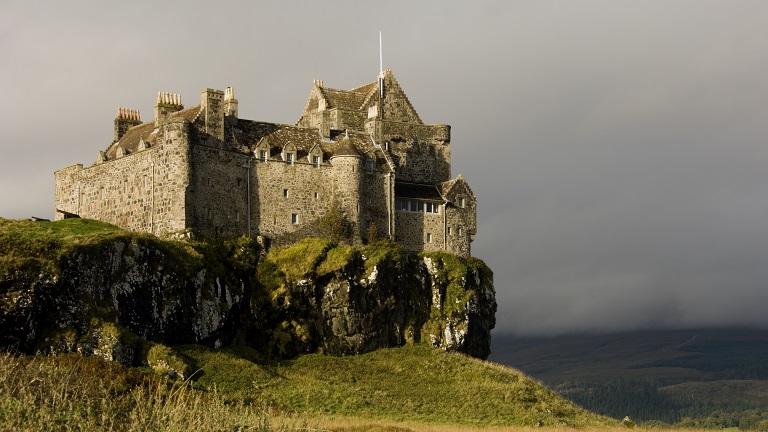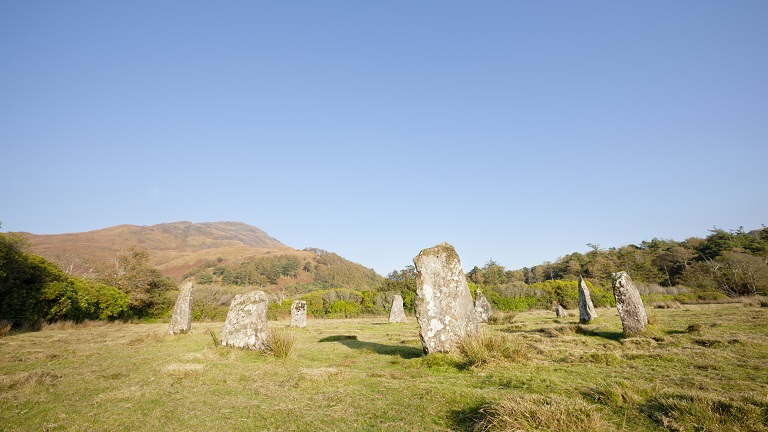From around 6500BC, Mull has been inhabited by different groups of peoples. First inhabited by Mesolithic hunter-gatherers living in caves before becoming a home for the Beakers, people of Dál Riata, Vikings and more, it has been irrevocably shaped by the hands of those who have lived and worked the land over thousands of years.
All around Mull and its surrounding islands, evidence of human history is etched into the landscapes. As well as weapons and pottery unearthed from the land, there are also a number of historical sites standing in plain sight – relics of long-gone cultures. If you would like to learn more about the historical sites on Mull, read on for some of the places you can visit during your holiday on the island.
Brochs
Brochs are Iron Age drystone structures that probably housed community leaders. They were built with two concentric circular walls that had a stairway or gallery in the middle to provide access to the upper floors. Designed to defend and convey power, they were really resilient buildings. So resilient, in fact, that on Mull two of these brochs still remain: Dun Nan Gall and An Sean Chaisteal.
Castles
Dotted around Mull are six castles, many of which can be visited. Of the castles, Aros Castle is believed to be the oldest on the island, with its now-crumbling walls having decorated the skyline since the 13th Century. The oldest inhabited castle, Duart Castle, has been the home of Clan Maclean for more than 700 years and is open to the public, with state rooms, exhibitions, and dungeons.

Macquarie Mausoleum
The Macquarie Mausoleum is found at Gruline at the head of Loch na Keal. Built in the 1800s, it is the burial place of Major General Lachlan Macquarie of Ulva who was born on the island and later became the first Governor of New South Wales – dubbed the “Father of Australia”. The mausoleum, which acts as a poignant reminder of the island’s ties with Australia, is looked after by Scotland’s National Trust.
Standing Stones
You can find Mull's only stone circle, Lochbuie Standing Stone Circle, at the foot of Ben Buie within the grounds of Lochbuie House. Believed to date back to the Bronze Age, the exact origins of these stones remain a mystery. As well as Lochbuie’s stone circle, you can also find many standing stones scattered across the island including the Kilmore, Glengorm, Maol Mor and Quinish standing stones.
Feeling inspired? Take a look at our luxury cottages in Mull here.
